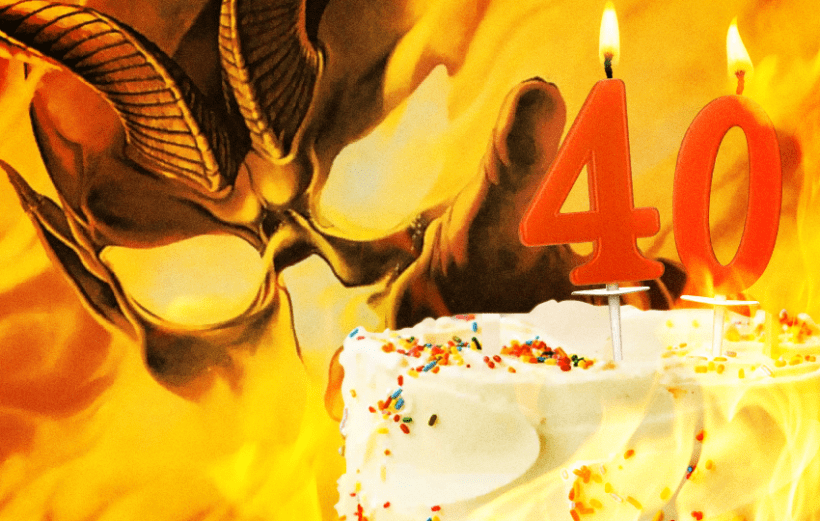
King Diamond is an elder statesman in the metal community, one of our foundational pillars. He is no longer just a vocalist but an action figure, cat enthusiast, and the subject of cartoons. The metal community universally loves him. Generations of metal fans have grown up with King Diamond, the friendly uncle. While most are familiar with King’s long and diverse musical legacy, they might not remember when King was frightening, provocative, and a touchstone in the 80s culture wars.
It’s challenging to look clearly at Mercyful Fate‘s masterpiece, Don’t Break The Oath, released 40 years ago today. Fans who purchased the album didn’t know King’s real name, Kim Bendix Petersen, and didn’t watch him on Twitch. He was genuinely mysterious, and that mystery was beguiling and terrifying. I found Don’t Break The Oath in a record store at the mall. The demon on the cover, brilliantly rendered by Thomas Holm, seemed to point at me. I inserted the album into a cassette player, put on a pair of cheap headphones, and was instantly terrified. I later walked with my parents into Gifford’s Ice Cream and was transfixed by the cassette sitting in the car like a cursed talisman. I thought the car might erupt into flames, or I faced eternal damnation for playing the album. I couldn’t get King’s falsetto out of my head. That’s a heavy experience for one spin.
Don’t Break The Oath was more solemn and musically sophisticated than any early 80s metal albums, particularly Satanic peers Venom. Venom was boisterous and had songs about prostitutes and partying binges next to songs like “Heaven’s On Fire.” Don’t Break The Oath sounded like someone recorded an esoteric, evil ritual and released it to the masses. As a result, Mercyful Fate and King ended up on the frontlines of the 80s Satanic panic. Music from Don’t Break The Oath appears in nearly every television special about Satanic cults. “Into The Coven” (on Fate’s debut Melissa) was one of the PMRC’s “Filthy 15” alongside W.A.S.P., Judas Priest, and Sheena Easton.
Don’t Break The Oath‘s place in the cultural wars is only part of its rich legacy; it’s one of the finest metal records ever released, with one of the best leadoff tracks (“A Dangerous Meeting.”) Many metal albums in the 80s were proudly primitive but Mercyful Fate’s music was challenging and sophisticated. Every song on the record is a mini metal/prog symphony. Hank Shermann and Michael Denner were a brilliant guitar tandem, and Timi Hansen (bass, RIP) and Kim Ruzz (drums) were a rhythm section for the ages. While many metal albums tried to shake the legacy of the 70s, Don’t Break The Oath is riddled with prog sounds and influences. Some sections wouldn’t sound out of place on a Yes album. Fortunately, Oath features none of Prog’s excesses despite longer songs. Any dedicated metalhead could hum every melody from this record. King’s performance – particularly his falsetto – is perhaps his best in a long career. To this day, few can replicate his range.
Mercyful Fate recently reunited and toured for the first time in decades. It is rare to see metal fans—some of them well into their 50s or older—so emotional. Much of this response has to do with Don’t Break The Oath. Few albums are on a shortlist of the best metal albums and a footnote in American history. Don’t Break The Oath is both and one of metal’s true treasures.


